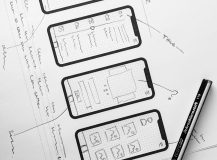If you’re an accountant or run a tax firm, your logo does more than sit pretty on your business card. It represents trust, professionalism, and financial expertise—qualities that are absolutely non-negotiable in your industry. Choosing the right logo concept can help attract clients, position your brand, and even give your firm a competitive edge.
TL;DR (Too Long; Didn’t Read)
All Heading
A well-designed logo for accountants and tax firms conveys professionalism, trust, and clarity. Classic symbols like checkmarks, ledgers, and calculators are always safe bets, but modern abstract and minimalist styles also work great. Keep it simple, choose timeless elements, and focus on visual balance to reflect your firm’s credibility. Read on for nine powerful logo concepts tailored for the finance industry.
1. Classic Monogram Logos
Monogram logos use your business initials in a stylized font to create a memorable identity. Think of two or three letters like “J&T” or “ABC” arranged in a symmetrical, balanced form.
This concept works exceptionally well for small accounting firms or independent professionals who want to highlight their personal brand. Choose serif fonts for a more traditional and trustworthy feel.
Why it works: Simplicity, legibility, and timeless appeal. Customized with the right typeface, monograms evoke sophistication without being over-the-top.
2. Minimalist Logos with Geometric Shapes
Minimalist design has taken the branding world by storm, and for good reason. A clean, geometric motif—think circles, triangles, and squares—can subtly communicate balance, logic, and financial precision.
Examples include overlapping shapes that form a subtle representation of a ledger or spreadsheet, abstracted into simple lines and forms.

Why it works: By eliminating visual clutter, minimalist logos guide the viewer’s eye and focus attention on the integrity of your firm.
3. Ledger or Spreadsheet Inspired Logos
A nod to the accountant’s foundational tools—ledgers, spreadsheets, and tally marks—can be powerful when used creatively. Columns, rows, or even subtle grid patterns can serve as the central element or background of the logo.
Combine this with stylized numbers (like “0” and “1”) to hint at both the analog and digital tools used in modern finance.
Why it works: It ties directly into your service offerings, creating immediate recognition and context.
4. Traditional Symbols with a Modern Twist
Consider using traditional symbols like calculators, abacuses, or even scrolls. The trick is to modernize them—render them as simple iconography, line art, or 3D gradients rather than using overly literal or dated images.

Pair these symbols with modern sans-serif fonts and flat design to keep your brand looking current rather than retro.
Why it works: It honors the legitimacy and history of the financial profession while still looking forward.
5. Financial Growth Icons
Visual metaphors such as upward arrows, bar charts, or a rising sun can be used to symbolize wealth accumulation, client success, and positive growth. These are compelling concepts, especially for tax advisory firms that aim to showcase how they help clients thrive financially.
Avoid overly dramatic representations. Instead, focus on sleek lines, abstract growth curves, or minimalist arrows rising discreetly above the firm’s initials.
Why it works: Clients are drawn to growth—this positions your firm as growth-oriented and client-centric.
6. Shield or Crest Style Logos
If your firm has a long-standing reputation or wants to convey authority and trust, a crest or shield could be perfect. These types of logos often take inspiration from law firms or historical institutions but can be equally effective for financial services.
Within the shield, you can incorporate numbers, scales (representing balance), or stylized books to reflect accounting practices.
Why it works: Shields naturally suggest protection and security—key concerns when clients are trusting you with sensitive financial matters.
7. Lettermark & Icon Fusion
This hybrid approach blends your business initials with a relevant symbol. For instance, an “F” for Finance incorporated into a bar graph, or a “T” (for Tax) merging into a rising arrow. The fusion of letters and icons creates multi-layered meaning and immediate brand recognition.
Designers often use negative space creatively in these logos to achieve a subtle but clever messaging effect.
Why it works: It’s visually interesting and compact, making for versatile usage across digital and print media.
8. Color Palette Driven Logos
Sometimes, it’s the color scheme that carries the weight. Shades of navy, gray, forest green, and burgundy often symbolize trust, wealth, and stability. Using color as the backbone of your logo allows for minimalistic design without sacrificing impact.
A color-centric logo might include a simple shape or letter, with color gradients or bold contrast to distinguish the brand.
Why it works: Colors evoke emotion. Choosing the right palette can influence how potential clients feel about your services before they even read a word.
9. Abstract and Conceptual Designs
For firms looking to distinguish themselves as innovative and forward-thinking, abstract logos can deliver a unique edge. These might not follow traditional visual rules, instead using artistic forms that suggest balance, flow, or transformation.
Examples include a yin-yang like shape symbolizing harmony in financial health, or swirling lines representing the cyclical nature of taxes and income.

Why it works: Abstract logos are less likely to feel outdated and can adapt well as your firm grows or pivots to include more services.
Final Thoughts: Choosing the Right Logo for Your Firm
No matter which concept speaks to you the most, keep in mind that your logo is the core of your firm’s visual identity. It should be:
- Timeless: Don’t follow fleeting trends—what looks good today should still feel right in five years.
- Scalable: Your logo must look good on everything from a website favicon to a billboard.
- Relevant: Choose imagery and design elements that reflect your values and services.
- Unique: Avoid generic clipart or overused symbols—it should stand out in a crowded market.
Consider hiring a professional logo designer who understands the nuances of visual communication in financial services. When done right, your logo becomes more than just a pretty picture—it becomes the embodiment of your brand’s voice, values, and vision.
With these nine logo concepts, you’re armed with ideas that can transform your accounting or tax firm from just another office into a recognizable, trustworthy, and memorable brand.













Recent Comments